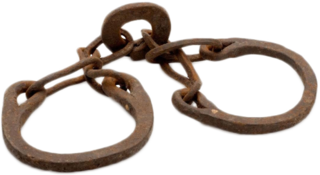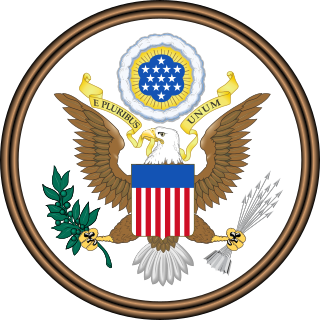 W
WThe Army of the Mughal Empire was the force by which the Mughal emperors established their empire in the 15th century and expanded it to its greatest extent at the beginning of the 18th century. Although its origins, like the Mughals themselves, were in the cavalry-based armies of central Asia, its essential form and structure was established by the empire's third emperor, Akbar.
 W
WThe Corps of Colonial Marines were two different British Marine units raised from former black slaves for service in the Americas, at the behest of Alexander Cochrane. The units were created at two separate points during the war, and were later disbanded once the military threat had disappeared. Apart from being created in each case by Cochrane they had no connection with each other. The first Corps was a small unit that served in the Caribbean from 1808 to 12 October 1810, recruited from former slaves to address the shortage of military manpower in the Caribbean. The locally-recruited men were less susceptible to tropical illnesses than were troops sent from Britain. The Corps followed the practice of the British Army's West India Regiments in recruiting former slaves as soldiers. In the previous year, the Mutiny Act of 1807 emancipated all slaves in the British Army and, as a result, subsequently enlisted slaves were considered free on enlistment.
 W
WDevshirme was the Ottoman Empire practice of forcibly recruiting soldiers and bureaucrats from among the children of their Balkan Christian subjects. The mention of it first appears in written records in 1438, but probably started earlier. It created a faction of soldiers and officials loyal to the Sultan, which counter-acted the power of the Turkish nobility who sometimes opposed the Sultan. The system produced all of the grand viziers, the second most powerful man in the Ottoman empire, from the 1400s to the 1600s. It also produced most of the Ottoman empire's provincial governors, military commanders and divans during that period.
 W
WThe Battle of Fort Pillow, also known as the Fort Pillow massacre, was fought on April 12, 1864, at Fort Pillow on the Mississippi River in Henning, Tennessee, during the American Civil War. The battle ended with a massacre of African-American Union troops and their white officers attempting to surrender, by soldiers under the command of Confederate Major General Nathan Bedford Forrest. Military historian David J. Eicher concluded: "Fort Pillow marked one of the bleakest, saddest events of American military history."
 W
WProspect Bluff Historic Sites is located in Franklin County, Florida, on the Apalachicola River, 6 miles (9.7 km) SW of Sumatra, Florida. The site contains the ruins of two forts – the earlier "Negro Fort", which was constructed by the British in 1814. The British allowed fugitive slaves and Creek tribesmen that had taken refuge with them to occupy it after they evacuated Florida, but the fort was destroyed in an attack from U.S. forces in 1816 including a barrage of cannonballs from gunboats. Fort Gadsden was built in 1818 within the former walls of Negro Fort. The site has been known by several other names at various times, including Prospect Bluff, British post, Nicholls' Fort, Blount's Fort, Fort Blount, African Fort, and Fort Apalachicola.
 W
WGhilman were slave-soldiers and/or mercenaries in the armies throughout the Islamic world, such as the Abbasid, Samanid, Ottoman, Safavid, Afsharid and Qajar empires. Islamic states from the early 9th century to the early 19th century consistently deployed slaves as soldiers, a phenomenon that was very rare outside of the Islamic world.
 W
WImpressment, colloquially "the press" or the "press gang", is the taking of men into a military or naval force by compulsion, with or without notice. European navies of several nations used forced recruitment by various means. The large size of the British Royal Navy in the Age of Sail meant impressment was most commonly associated with Great Britain and Ireland. It was used by the Royal Navy in wartime, beginning in 1664 and during the 18th and early 19th centuries as a means of crewing warships, although legal sanction for the practice can be traced back to the time of Edward I of England. The Royal Navy impressed many merchant sailors, as well as some sailors from other, mostly European, nations. People liable to impressment were "eligible men of seafaring habits between the ages of 18 and 55 years". Non-seamen were sometimes impressed as well, though rarely.
 W
WA Janissary was a member of the elite infantry units that formed the Ottoman Sultan's household troops, bodyguards and the first modern standing army in Europe. The corps was most likely established during the reign of Murad I (1362–1389).
 W
WMamluk is a term most commonly referring either to slave soldiers, freed slaves, Muslim converts assigned to military and administrative duties, and Muslim rulers of slave origin.
 W
WThe Merikins or Merikens were African-American Marines of the War of 1812 – former African slaves who fought for the British against the US in the Corps of Colonial Marines and then, after post-war service in Bermuda, were established as a community in the south of Trinidad in 1815–16. They were settled in an area populated by French-speaking Catholics and retained cohesion as an English-speaking, Baptist community. It is sometimes said that the term "Merikins" derived from the local patois, but as many Americans have long been in the habit of dropping the initial "A" it seems more likely that the new settlers brought that pronunciation with them from the United States. Some of the Company villages and land grants established back then still exist in Trinidad today.
 W
WThe Militia Act of 1862 was an Act of the 37th United States Congress, during the American Civil War, that authorized a militia draft within a state when the state could not meet its quota with volunteers. The Act, for the first time, also allowed African-Americans to serve in the militias as soldiers and war laborers.
 W
WThe Scythian archers were a hypothesized police force of 5th- and early 4th-century BC Athens that is recorded in some Greek artworks and literature. The force is said to have consisted of 300 armed Scythians who were public slaves in Athens. They acted for a group of eleven elected Athenian magistrates "who were responsible for arrests and executions and for some aspects of public order" in the city.
 W
WThe United States Colored Troops (USCT) were regiments in the United States Army composed primarily of African-American (colored) soldiers, although members of other minority groups also served with the units. They were first recruited during the American Civil War, and by the end of the war in 1865, the 175 USCT regiments constituted about one-tenth of the manpower of the Union Army. About 20% of USCT soldiers died, a rate about 35% higher than that of white Union troops. Despite heavy casualties, many fought with distinction, 15 USCT soldiers receiving the Medal of Honor and numerous others receiving other honors.